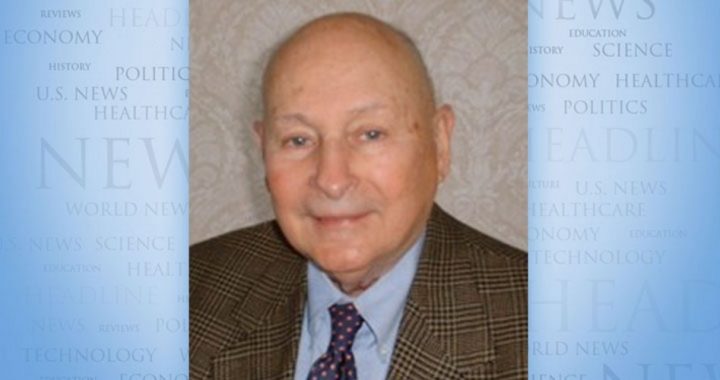
More than 200 politicized teachers participated in the recent Democratic National Convention (DNC) in Charlotte, N.C., representing their unions, not their students. Since 1980, politicized teachers have been one of the largest groups represented at the DNC, and they represent the far left of the political spectrum.
The National Education Association’s involvement in politics has a long history. Back in 1964, Stephen K. Bailey of Syracuse University wrote in the November NEA Journal:
Education is one of the most thoroughly political enterprises in American life. More public money is spent for education than for any other single function of state and local government…. It is evident that effective political leadership is the keystone to the arch of educational finance.
And in 1966, when Sam Lambert was elected head of the NEA, he told his audience of teachers:
NEA last year had 1,030,000 members; and by the end of this year we will have at least 1,100,000. We are already four times as large as any other professional organization in this country….
NEA will become a political power second to no other special interest group….
And, finally, NEA will organize this profession from top to bottom into logical operating units that can move easily and effectively and with power unmatched by any other organized group.
Today, the NEA is the nation’s largest employee organization, representing more than 3 million elementary and secondary teachers, higher education faculty, support professionals, school administrators, retired educators and students preparing to become teachers.
During the last Fourth of July holiday weekend, the NEA held its annual convention in Washington, D.C., attended by 9,000 delegates. President Dennis Van Roekel told the teachers:
We are three million strong, and we have the greatest power in the world — the power to change lives. So let’s use that power. Let’s use our power to make public education stronger…. to make our nation a better place, moving ever closer to our great and noble ideal of equal opportunity — not just for a fortunate few, but for every single child.
However, no one seems to know how to stop the dumbing down of Americans by their schools. Mr. Roekel can say nice things about public education but the resolutions passed by the delegates indicate that its far-left agenda does not include anything such as intensive phonics in every American first-grade classroom.
Their main effort at this time is to get President Barack Obama reelected. To this end, Roekel distributed a Memorandum to all the delegates revealing the amount of money available in the NEA Ballot Measures/Legislative Crises Fund as being $26,939,129. The NEA has also created an NEA Media Campaign Fund supported by a special dues assessment on every member. The money will go to state affiliates for local political advertising.
All 99 pages of Resolutions passed by the NEA General Assembly are available online. So anyone in America with a computer can see what the NEA stands for. The NEA has a very interesting view of the power and responsibility of local school boards. Its resolution states:
The National Education Association believes that it is the responsibility of school boards to provide a quality education to each student within a school district. The Association also believes that school boards must provide resources and support so that each school in a district meets standards for educational excellence….
The Association believes that the composition of school boards must be representative of the population within the school district, including minority groups; that board members must be elected by the voters in the school district; and that board members must be elected from representative districts. The association opposes federal, state, and local takeovers of public schools, public school districts, and their governing boards….
The Association believes that student participation in a school board’s deliberative process should be encouraged, and that student input in the voting process should be advisory only. Wherever a school board includes student members, they should be excluded from participating in discussions, receiving information, and voting on issues dealing with education employees and items contained in negotiated agreements.
In other words, school boards can control education in their local communities as long as they abide by what the NEA insists they ought to do. So much for local control. Also, when it comes to educational funding, the NEA states:
The National Education Association believes that every state should ensure its students a quality education by providing the funding needed to enable all students to achieve educational excellence. Such an education requires adequate and equitable funding from public tax sources for schools to obtain the resources (e.g., personnel, programs, materials, buildings, and technology) to meet the needs of all students.
Nowhere in the resolutions is “quality education” or “educational excellence” ever defined, although the taxpayer must be forced to pay for it all. The simple truth is that the public schools, operated by unionized teachers, have not been able to deliver “quality education” or “educational excellence” for decades. That was the verdict of the Council on Foreign Relations Task Force on Education, which stated in its March 2012 press release:
“Educational failure puts the United States’ future economic prosperity, global position, and physical safety at risk,” warns the Task Force, chaired by Joel I.Klein, former head of New York City public schools, and Condoleezza Rice, former U.S. secretary of state. The country “will not be able to keep pace—much less lead—globally unless it moves to fix the problems it has allowed to fester for too long,” argues the Task Force.
The report notes that while the United States invests more in K-12 public education than many other developed countries, its students are ill prepared to compete with their global peers. According to the results of the 2009 Program for International Student Assessment (PISA), an international assessment that measures the performance of 15-year-olds in reading, mathematics, and science every three years, U.S. students rank fourteenth in reading, twenty-fifth in math, and seventeenth in science compared to students in other industrialized countries.
The NEA has never been able to explain why its unionized teachers can’t do a better job of educating American children. They boast about all the political power they have to force the public to pay for the public schools, but they never boast about the inferior educational product they produce. Indeed, their latest contribution to educational excellence in Chicago is to go on strike and deny Chicago’s 400,000 public school students their daily dose of educational malpractice. According to the Associated Press:
In this June 6, 2012 photo, Chicago Teachers Union President Karen Lewis casts her ballot during a strike authorization vote at a Chicago high school. Angered by Mayor Rahm Emanuel’s call for a longer school day and wage and benefit concessions, 25,000 Chicago teachers voted this week to consider authorizing their first strike in a quarter-century. (AP Photo/M. Spencer Green)
In this Thursday, Aug. 30, 2012 photo, Emily Ponce, 8, a second-grader at Manuel Perez Jr. Elementary School, in Chicago’s predominantly Hispanic Pilsen neighborhood, watches her brother Jose Ponce, 13, a Perez eighth-grader, as he talks about the chance of a teachers strike. (AP Photo/M. Spencer Green)
Thousands of teachers walked off the job Monday in Chicago’s first schools strike in 25 years, after union leaders announced that months-long negotiations had failed to resolve a contract dispute with school district officials by a midnight deadline. . . .
Some 26,000 teachers and support staff were expected to join the picket. Union leaders and district officials were not far apart in their negotiations on compensation, Chicago Teachers Union President Karen Lewis said. But other issues — including potential changes to health benefits and a new teacher evaluation system based partly on students’ standardized test scores — remained unresolved, she said.
The idea of evaluating teacher quality on the basis of student performance is one that strikes at the heart of teaching malpractice. But if teachers are not trained properly in how to teach their students to read, then it’s the fault of the teacher trainers in the colleges of education. However, that ivory tower remains untouchable. Also, the unions have become aware of what recently happened to the teachers unions in Wisconsin. So they are trying to avoid a bad public press. According to the AP:
The school board was offering a fair and responsible contract that would meet most of the union’s demands after “extraordinarily difficult” talks, board president David Vitale said. Emanuel said the district offered the teachers a 16 percent pay raise over four years, doubling an earlier offer.
Rahm Emanuel had to contend with the teachers unions the moment he took office as Mayor of Chicago. The school district faced a $700 million budget shortfall. He rescinded 4 percent pay raises for teachers. He asked the union to accept 2 percent pay raises in exchange for a longer school day by 90 minutes. When the union refused, he attempted to go around it by asking teachers to waive the contract and add 90 minutes to the school day. But he stopped the effort when the union went before the Illinois Educational Labor Relations Board.
President Obama’s former Chief of Staff, Mr. Emanuel, is no doubt in sympathy with Democrats for Education Reform who are in a struggle with the teachers unions to create Charter Schools. This is bound to be a long, drawn-out tug of war between public unionized Democrats and New York hedge-fund education reform Democrats.
Since public education represents the largest river of taxpayer cash flow, only second to national defense, it is bound to be the object of political control by unions and others. Charter Schools are public schools, eligible for public funding. But they are free of union control. This is what the NEA says about Charter Schools.
The National Education Association supports innovation in public education. The Association believes that acceptable charter schools and other nontraditional public school options, which comply with Association criteria, including, but not limited to, collective bargaining efforts and the full participation of the association, can provide educational alternatives for students. The Association also believes that, when concepts such as charter schools and other nontraditional school options are proposed, affected public education employees should be directly involved in the design, implementation, and governance of these programs….
The Association believes that programs must be adequately funded, must comply with all standards for academic assessment applicable to regular public schools, must include start-up resources, must not divert current funds from the regular public school programs, and must contain appropriate procedures for regular periodic assessment and evaluation, as well as adequate attendance and record keeping procedures.
In other words, the NEA’s sticky fingers will be all over the charter schools whether the hedge-fund reformers like it or not. That’s a fact of life that Democrat education reformers will have to contend with in the years to come.



